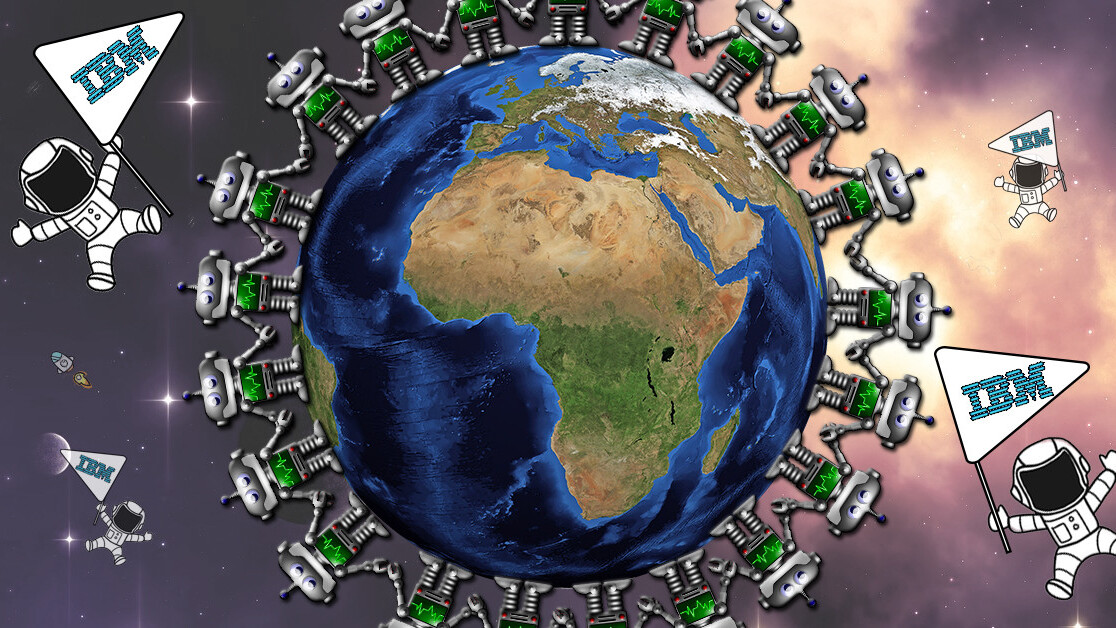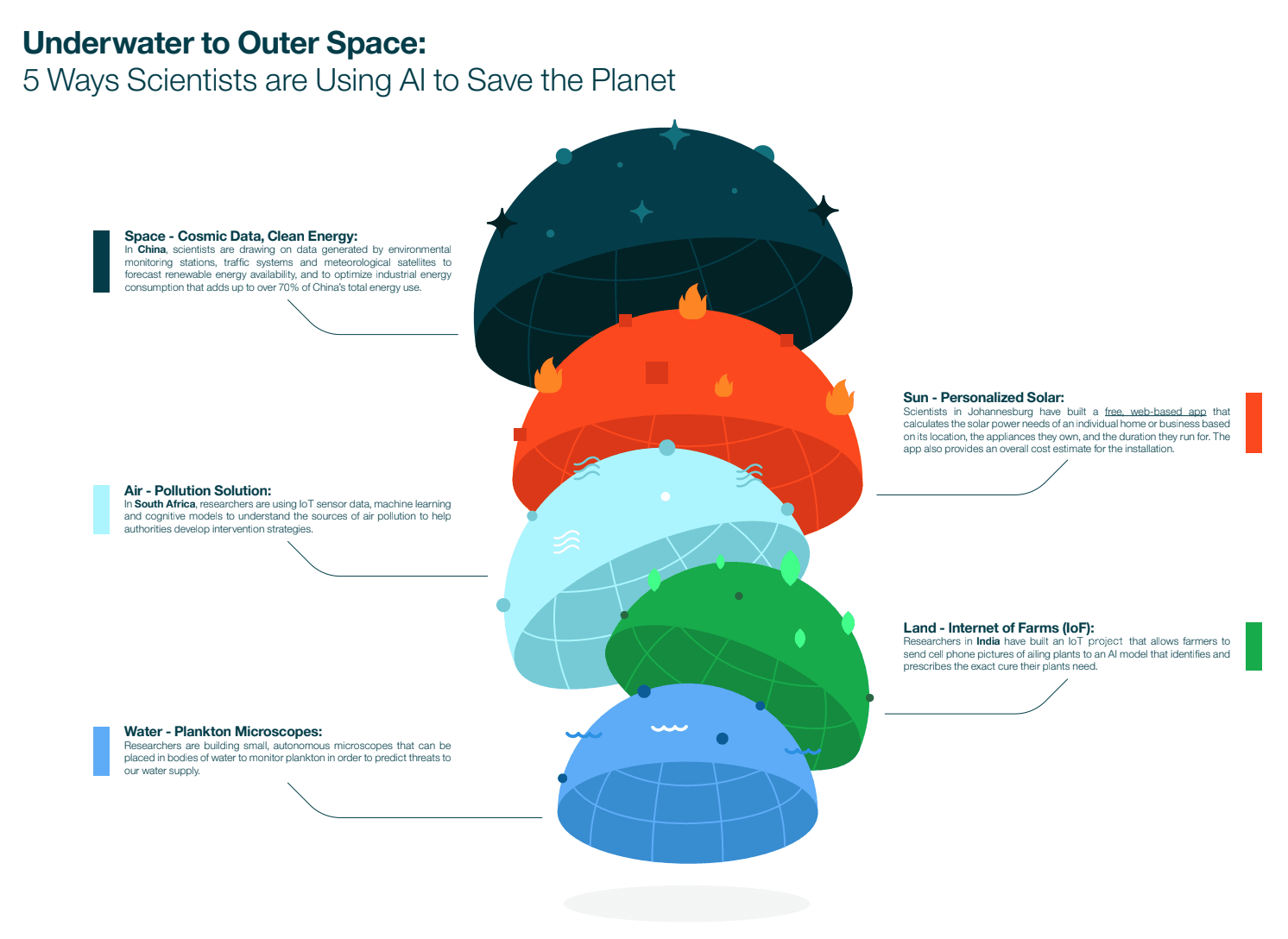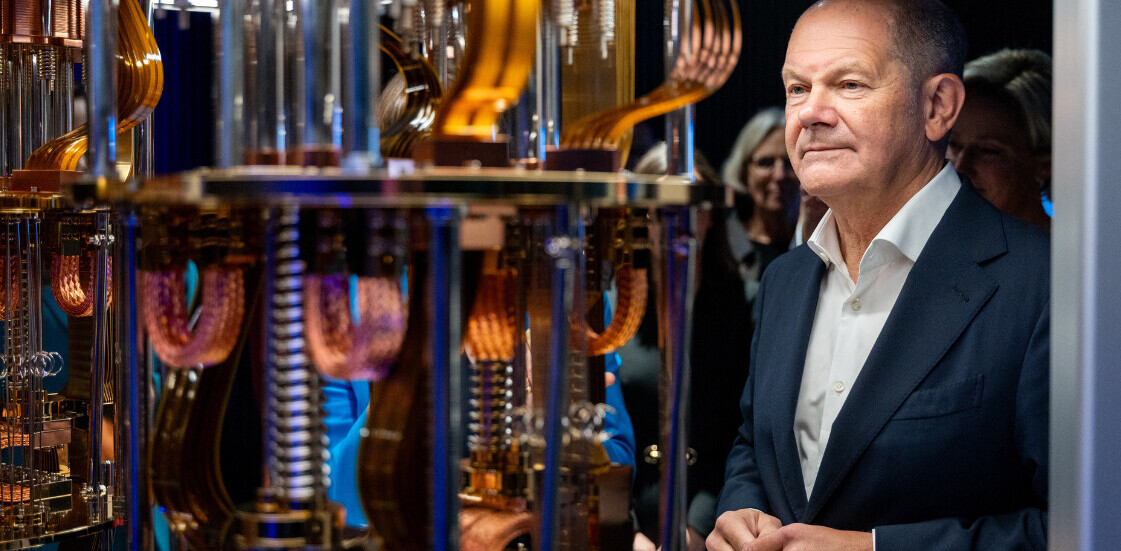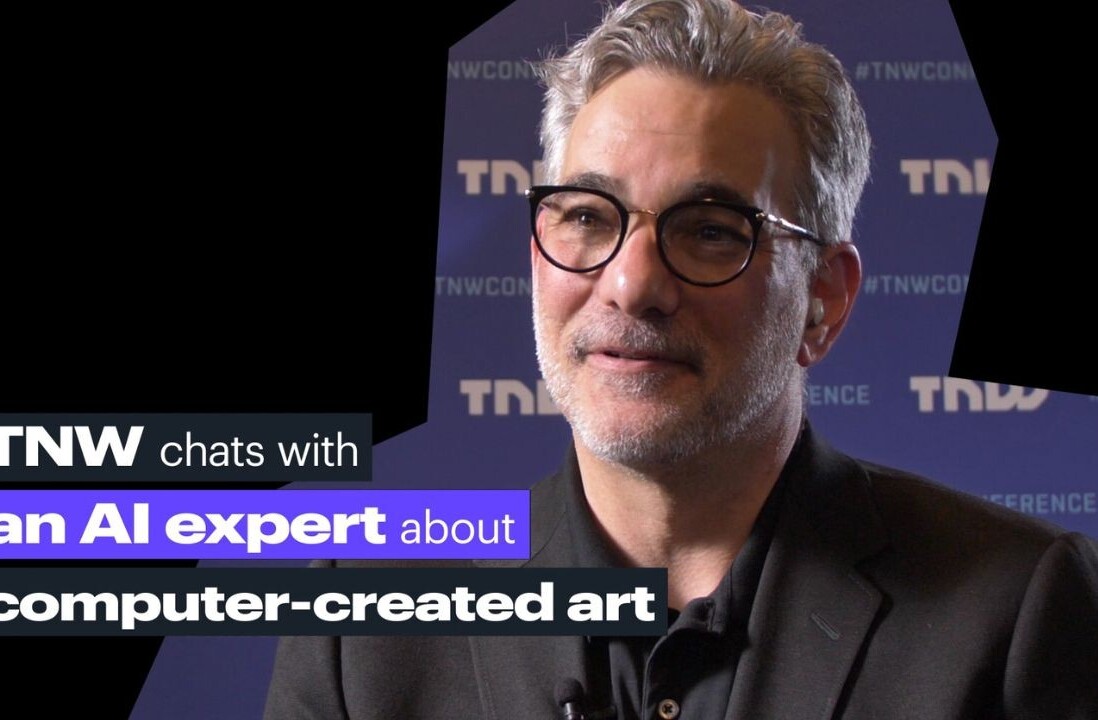
IBM’s approach to AI is probably best described as “comprehensive.” Watson, the company’s flagship deep learning system, has been everywhere from the Grammy Awards to the International Space Station. IBM’s contributions, however, don’t end with B2B and government projects. In its spare time the company also uses AI to save the planet. No biggie.
AI has quickly become an important tool for environmental scientists and researchers trying to reverse climate change, develop clean energy, and revolutionize agriculture.
Across the globe, IBM’s researchers are creating solutions to some of the biggest problems our planet and species face today, and machine learning is a huge part of its efforts.

To take a deeper dive, we spoke with Lloyd Treinish, an IBM researcher with an awesome title: IBM Distinguished Engineer, Chief Scientist – Environmental Modeling, Climate, Weather and Deep Thunder.
What does AI bring to the table that wasn’t there five years ago?
I think that the biggest contribution that AI has made is in helping people make better decisions, associated with environmental problems, especially when there is uncertainty. However, we must start with the science, otherwise there are no data for AI techniques to use. For example, for weather forecasts, we use our knowledge of the physics of the atmosphere to create mathematical models, which we solve with supercomputers.
The data may also be used with machine learning (i.e., “AI”) to further the models, so that we can predict the impact of weather, which is what is needed to enable better decisions. We have been doing research on this for over a decade. But in the last few years, it has become practical. In fact, we now have commercial offerings that use this approach.
Consider, for example, the ability to predict when the power will go out from storm-driven damage a couple of days from now. The storm prediction is a physics problem. Forecasting outages uses AI (machine learning) driven by what the physics tells us and what utilities tell us about outages. The idea is that we can decompose a very hard problem like predicting outages into two simpler ones, and couple them together (i.e., physics + AI).
What will IBM’s planet-saving AI initiatives look like five years from now?
Let me rephrase the question, if you don’t mind. They will be environmental initiatives that can help save the planet, not merely AI initiatives. We will use AI and other technologies, driven by solid science from many disciplines. They will help people, businesses and governments make better decisions, to assess uncertainty in different scenarios, and to understand the implications of the tradeoffs of different choices.
To illustrate what I mean let me outline a couple of examples. Consider a city planner who is keen on mitigating the impact of climate change through policy changes. Of particular concern are the impacts from more intense heat waves that can affect the health of citizens, energy usage, etc.
The planner could ask which approaches should be required such as making all roofs green. But how would one know it they would actually work vs. other choices? What are the tradeoffs, including the costs? Via physics, we can simulate the climate over the coming decades at an urban scale as a base.
We would then redo the simulations with adjustments in the characteristics of the city that reflect different mitigation strategies to see how heat waves would evolve differently. The results of the simulations could be used by an AI-based assistant that can help the city planner do what-if evaluations of such choices and what contribution to more intense heat waves comes from global warming vs. urbanization.
Consider another example, where a farmer needs to choose between two different types of corn to plant in the upcoming season. They each have different yield characteristics, depending on temperature and rainfall during the growing season, and different value in the market place. There is some variation in the cost to grow, including use of fertilizer, pesticides and irrigation, all of which are dependent on the weather.
The output of physical models of the atmosphere, agronomic models of crop growth, and economic models of the corn, water and electricity markets covering the pending growing season could be used by an AI-based assistant to help the farmer assess tradeoffs in profit vs. environmental impact (e.g., carbon footprint, water usage, effects on soil) to determine a more optimal choice.
What can my readers do to help IBM save the planet?
They can become informed about climate change, environmental impacts of human activities, and share that knowledge with others. There are on-line courses like Communicating Climate Change Scenarios, or from sources like The Intergovernmental Panel on Climate Change, and the year-long digital series from The Weather Company, United States of Climate Change, investigating the impact of climate change across America, and how this has affected lives in each of the 50 states.
They can make changes in their personal and work lives in reducing their energy usage and using energy from renewable sources, recycling, etc. Also, they can contribute the idle time on their computing devices to the World Community Grid projects that IBM announced today.
For more information you can visit IBM’s Energy and Environment website.
The Next Web’s 2018 conference is just a few weeks away, and it’ll be ??. Find out all about our tracks here.
Get the TNW newsletter
Get the most important tech news in your inbox each week.





